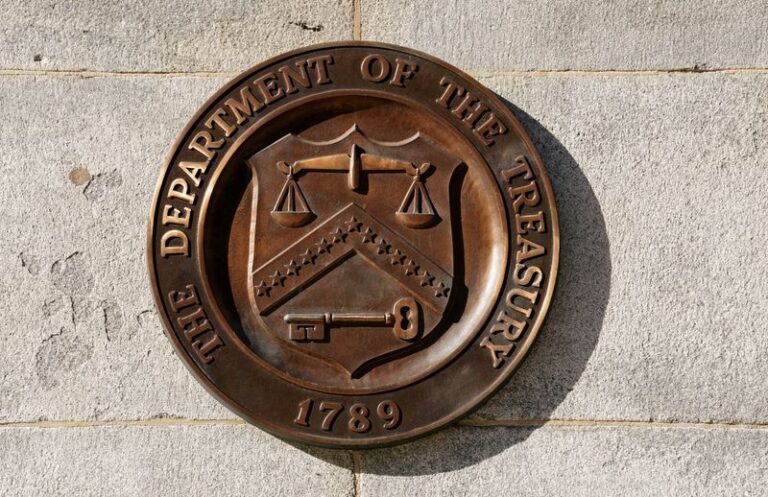By Davide Barbuscia and Pete Schroeder
NEW YORK (Reuters) -U.S. Treasury market participants hoping for a long-awaited shift in bank leverage rules may be in for a letdown if U.S. regulators choose to ease capital requirements rather than exclude U.S. government bonds from leverage calculations.
The Federal Reserve said this week it would weigh proposals to ease leverage requirements for large banks at a June 25 meeting, launching what’s likely to be a wider review of banking regulations. The agenda includes potential changes to the “supplementary leverage ratio,” a rule that mandates banks hold capital against all assets, irrespective of risk.
Regulators including the Fed, the Federal Deposit Insurance Corporation and the Office of the Comptroller of the Currency have been considering whether to tweak the rule’s formula to reduce big banks’ burdens or provide relief for extremely safe investments, like Treasury bonds, Reuters has reported.
Currently, all banks are required to hold 3% of their capital against their leverage exposure, which is their assets and other off-balance sheet items like derivatives. The largest global banks must hold an extra 2% as well in what is known as the “enhanced supplementary leverage ratio.”
The Fed is expected to propose tweaks to that ratio in a bid to reduce the overall burden of that requirement, as opposed to broadly exempting categories of assets from the requirement, such as Treasury bonds, according to two industry officials.
However, it is possible the Fed could seek input on some exemptions, the officials said. The FDIC announced its own meeting next Thursday, where the agency will also discuss proposed changes to that ratio.
On Tuesday, Bloomberg reported that regulators plan to reduce by up to 1.5 percentage points the enhanced ratio for the biggest banks, bringing it down to a range of 3.5% to 4.5%.
“Lowering the capital requirements instead of a Treasury carve-out from the SLR is a weaker form of regulatory easing, and in my view it doesn’t fully address the constraint dealers face during intense market stress,” said Steven Zeng, U.S. rates strategist at Deutsche Bank.
“In our view, the news is moderately underwhelming,” analysts at Wells Fargo said in a note. “We think that many market participants were anticipating a carve out of UST assets from the denominator.”
The Fed did not immediately respond to a request for comment.
Spreads between long-term swap rates and Treasury yields tightened on Wednesday, turning more negative, even as earlier in the year they had been widening amid hopes that regulatory shifts in bank capital rules would bolster demand for Treasuries. The move likely reflected disappointment on the news that regulators plan to lower the requirements, said Zeng.
Story Continues
